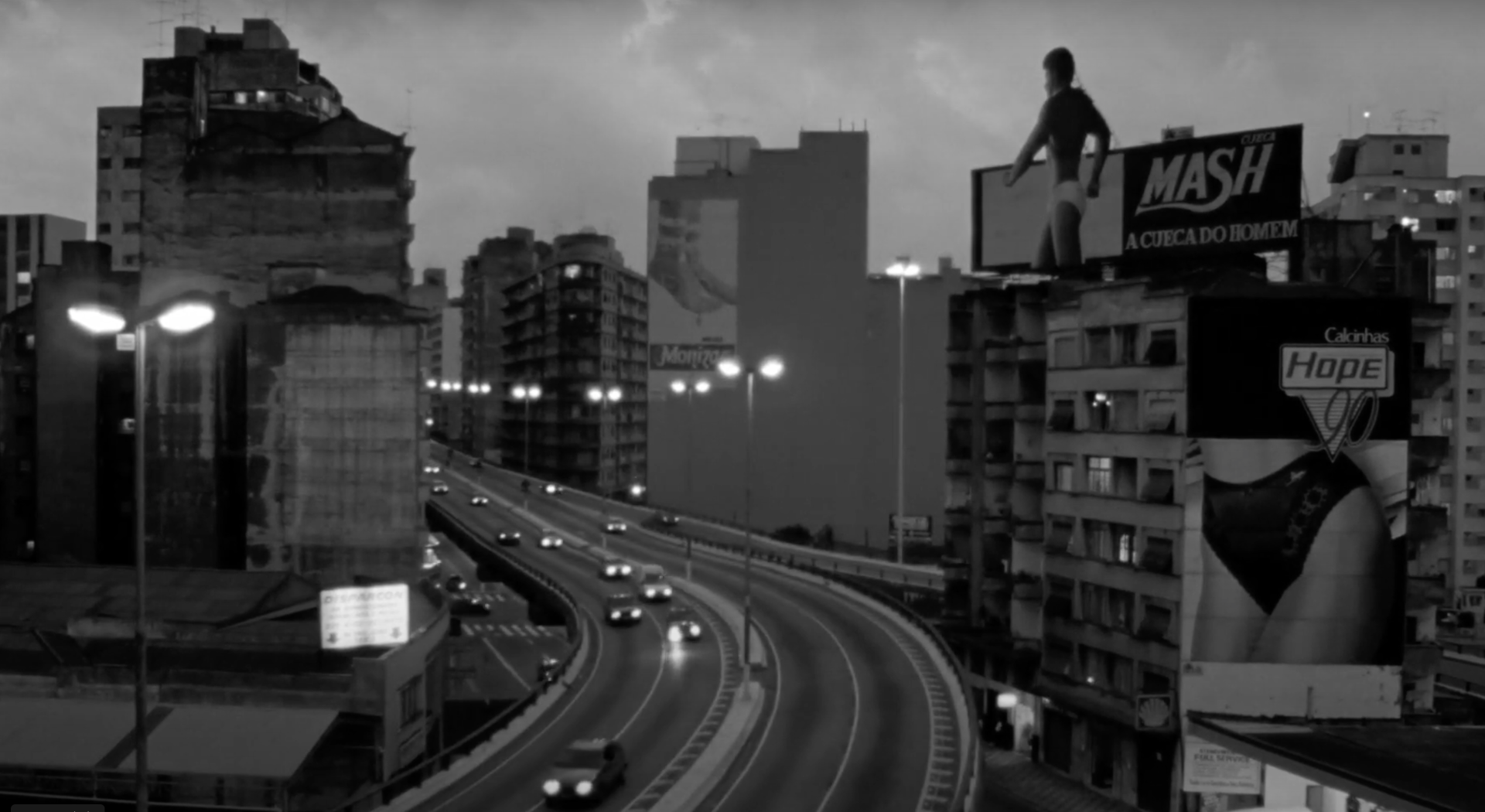
São Paulo’s Minhocão on Film
##plugins.themes.immersion.article.figure##

Abstract
This paper concerns the cinematic representation of São Paulo’s Elevado João Goulart, a 3.5km elevated expressway close to the historic centre of the city, popularly known as the Minhocão. Built during the boom period of Brazil’s dictatorship, the Minhocão opened to traffic in January 1971. Controversial at the beginning of its existence, it has been partially rehabilitated, a process in which film has been important. The paper describes three general modes of the Minhocão’s depiction on film: in the first it represents a generalised fear of the modern city, in the second it is a normal part of the landscape, and in the third it is a form of aesthetic occupation. Key films discussed include Kiss of the Spider Woman (1985), directed by Hector Babenco (1985) and the documentary Elevado 3.5 (Maíra Bühler, Paulo Pastorelo and João Sodré 2006). The paper responds to Sophia’s Landscapes of Care theme by showing how over time film can, over time, help rehabilitate seemingly irredeemable infrastructure.
References
- Augé, Marc. Non-Places: Introduction to an Anthropology of Supermodernity. London: Verso, 1995.
- Ballard, J. G., Concrete Island, unpublished screenplay (20 September 1972), British Library manuscript 88938/3/9/2
- Ballard, J. G. Crash. London: Jonathan Cape, 1973
- Ballard, J. G. Concrete Island: London: Jonathan Cape, 1974.
- Bellos, Alex. “Hard Cells and Transvestite Weddings.” Guardian (2 November 2003): https://www.theguardian.com/film/2003/nov/02/londonfilmfestival2003.features1
- Berman, Marshall. All That Is Solid Melts Into Air. London: Verso, 1983.
- Caldeira, Teresa. City of Walls: Crime, Segregation, and Citizenship in São Paulo. Berkeley and Los Angeles: University of California Press, 2001.
- Estado de São Paulo, “Minhocão Aberto, Sem Repercussão Esperada.” (26 January 1971): 16.
- Easterling, Keller. Extrastatecraft: The Power of Infrastructure Space. London: Verso, 2014.
- Farago, Jason. “Rosa Barba examines the everyday chaos of São Paulo’s ‘giant earthworm’ highway.” Guardian (20 September 2016): https://www.theguardian.com/artanddesign/2016/sep/20/rosa-barba-sao-paulo-biennialdisseminate-and-hold-film
- Florence, Luiz Ricardo. “Estréia documentário ‘Elevado 3.5’.” Vitruvius, 032. 03 (June 2010): online.
- Florence, Luiz Ricardo. “Arquitetura e Autopia: Infraestrutura Rodoviária em São Paulo 1952-1972.” PhD diss., University of São Paulo, 2020.
- Folha de São Paulo. “DSV Fecha o Elevado Durante a Madrugada.” (30 December 1976): 14.
- Frichot, Hélène, Adrià Carbonell, Hannes Frykholm and Sepideh Karami eds. Infrastructural Love: Caring for our Architectural Support Systems. Basel: Birkhäuser, 2022.
- Lagonegro, M. A. “Metrópole sem metrô: transporte público, rodoviarismo e populismo em São Paulo (1955-1965).” PhD thesis, University of São Paulo, 2003.
- Larkin, Brian. “The Poetics and Politics of Infrastructure.” Annual Review of Anthropology 42 (2013): 327-43.
- Levi-Strauss, Claude. Tristes Tropiques. London: Hutchinson, 1961.
- Maluf, Paulo, “Paulo Maluf anuncia construção do Minhocão” (1969) https://www.youtube.com/watch?v=j44cTNnDHps McKee, Yates, ‘Occupy and the End of Socially /engaged Art’, e-flux Journal, 72, April 2016 https://www.e-flux.com/journal/72/60504/occupy-and-the-end-of-socially-engaged-art/
- Merriman, Paul. Driving Spaces: A Cultural-Historical Geography of England’s M1 Motorway. Oxford: Blackwell, 2007.
- Millington, Nate. “Public Space and Terrain Vague on São Paulo’s Minhocão.” In Deconstructing the High Line, edited by Christoph Lindner and Brian Rosa. New Brunswick: Rutgers, 2017: 201-218.
- Nito, Mariana Da Silva and Simone Scifoni. “O Patrimônio Contra a Gentrificação: a Experiência do Inventário Participativo de Referências Culturais do Minhocão.” Revista do Centro da Pesquisa e Formação 5 (2017): 82-94.
- Olivieri, Silvana. Quando o Cinema Vira Urbanismo: o Documentário como Ferramenta de Abordagem da Cidade. Salvador: SciELO Books, 2011.
- Pinazza, Natalia and Louis Bayman eds. World Film Locations: São Paulo. Bristol: Intellect, 2013.
- Senra, Ricardo ‘Após proibição, prefeitura autoriza piscina olímpica no Minhocão’, Folha de São Paulo, 20 March 2014 https://www1.folha.uol.com.br/saopaulo/2014/03/1428402-apos-proibicao-prefeitura-autoriza-piscina-olimpica-nominhocao.html
- Shonfield, Katherine. Walls Have Feelings: Architecture, Film and the City, Abingdon, Routledge, 2000.
- Souza, Marcelo Lopes de. Fobópole: O Medo Generalizado e a Militarização da Questão Urbana. Rio de Janeiro: Bertrand Brasil, 2008.
- Veloso, Gil and Paulo von Poser. Um Viaduto Chamado Minhocão. São Paulo: Dedo de Prosa, 2015.
- Williams, R. J., The Culture Factory: Architecture and the Contemporary Art Museum, London: Lund Humphries, 2021
- Wisnik, Guilherme. “Dentro do Nevoeiro: diálogos cruzadas entre arte e arquitetura contemporânea.” PhD diss., University of São Paulo, 2012.
- Films cited
- Babenco, Hector, director, Kiss of the Spider Woman, Film Dallas Pictures/Sugarloaf Films/HB Filmes, 1985, 2 hr 1 min.
- Babenco, Hector, director, Carandiru, Sony Pictures Classics/Globo Filmes, 2003, 2 hr., 27 min.
- Barba, Rosa, director, Disseminate and Hold, 2016, Foundation Prince Pierre de Monaco, 21 min.
- Bühler, Maíra, Paulo Pastorelo and João Sodré, directors, Elevado 3.5, Primo Filmes/TV Cultura, 2005, 1 hr., 15 min.
- Coutinho, Edouardo, director, Edifício Master, VideoFilmes, 2003, 1 hr., 50 min.
- Giorgetti, Ugo, director, Prédio Martinelli, Espiral, 1975, 22 min.
- Raulino, Aloysio director, Lacrimosa, ECA/USP, 1970, 12 min.
- Rewald, Rubens, director, Segundo Tempo, Miração Filmes/Heartwake Films, 2023, 1 hr., 47 min.
- Tilesi, Chiara and Stefano Veneruso, producers, All the Invisible Children, MK Film Productions/Rai Cinema, 2005, 2 hr., 4 min.